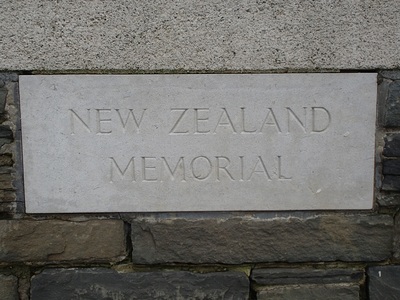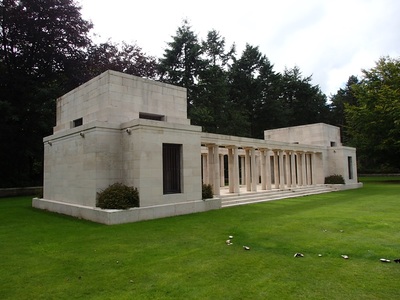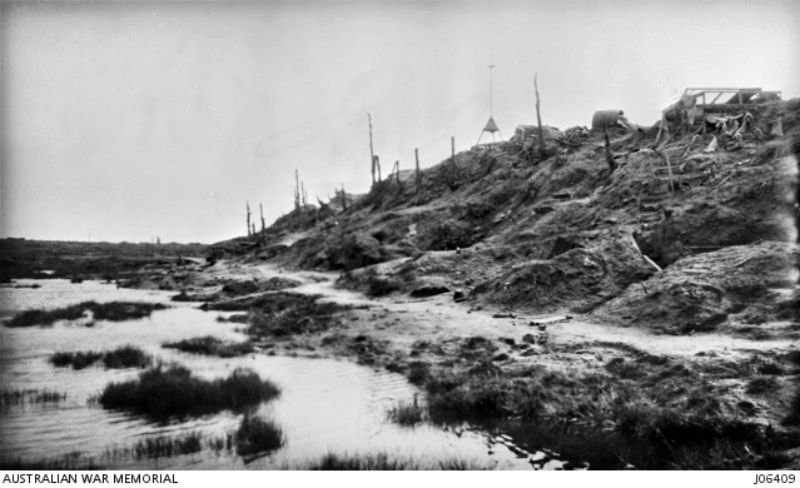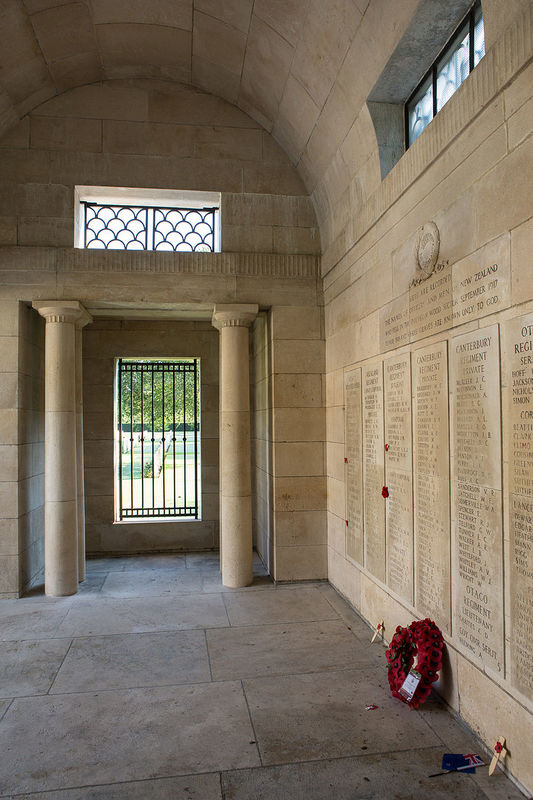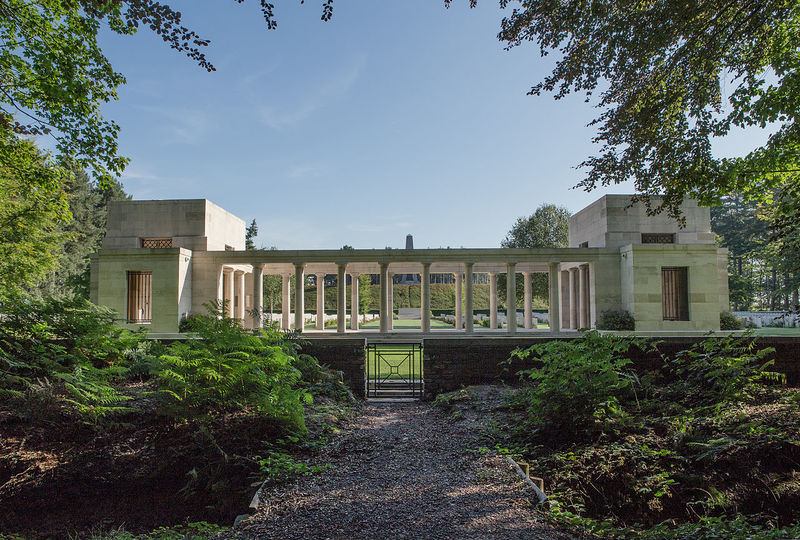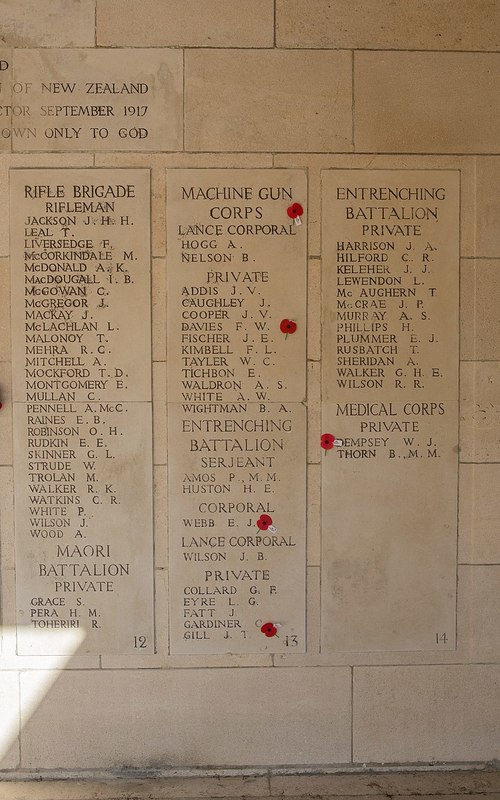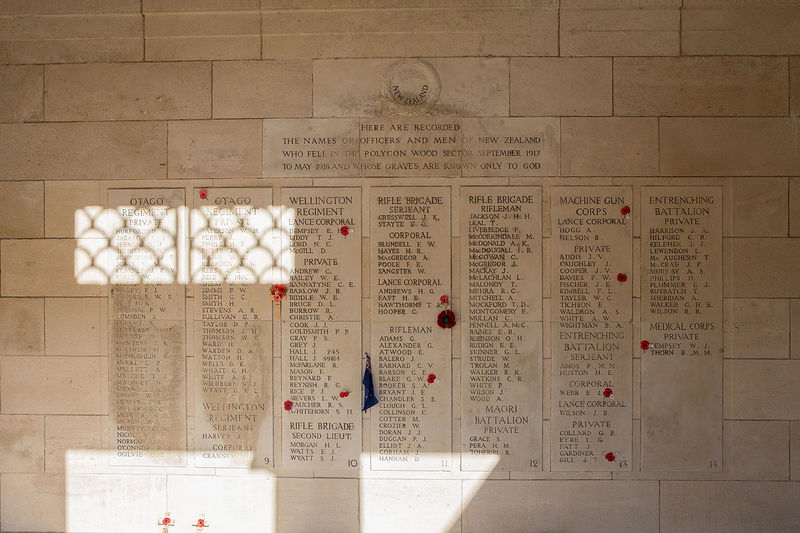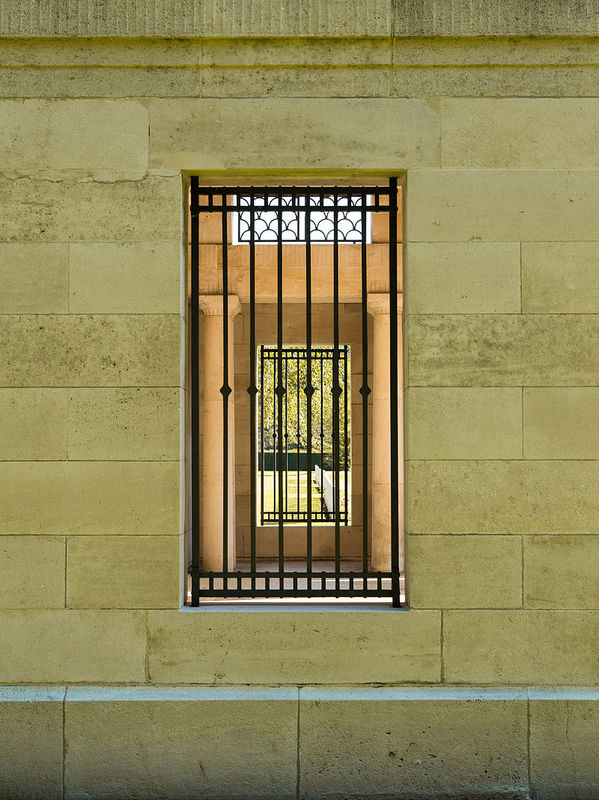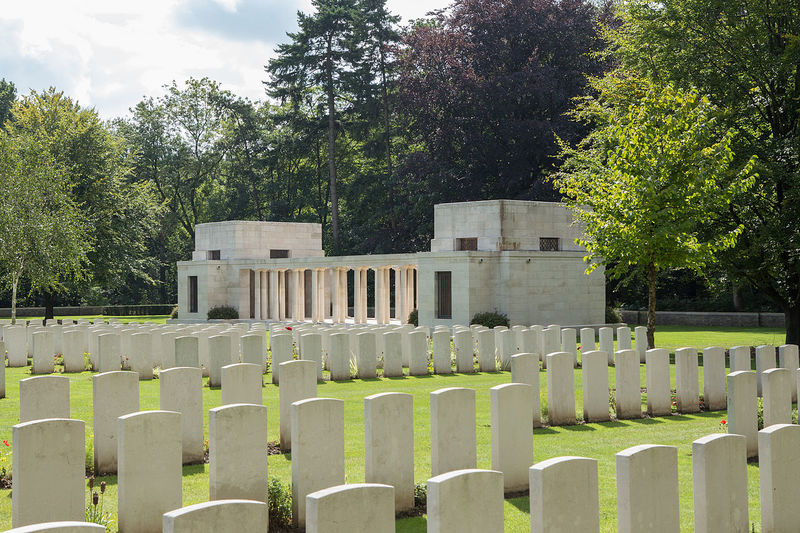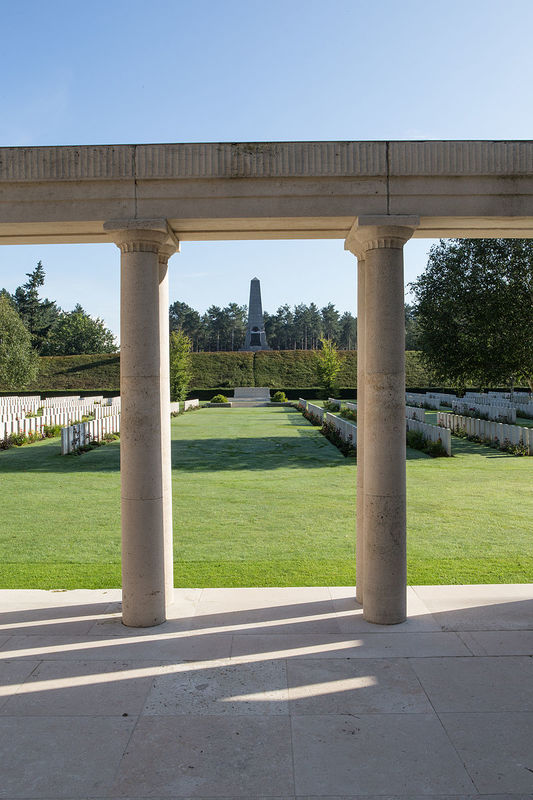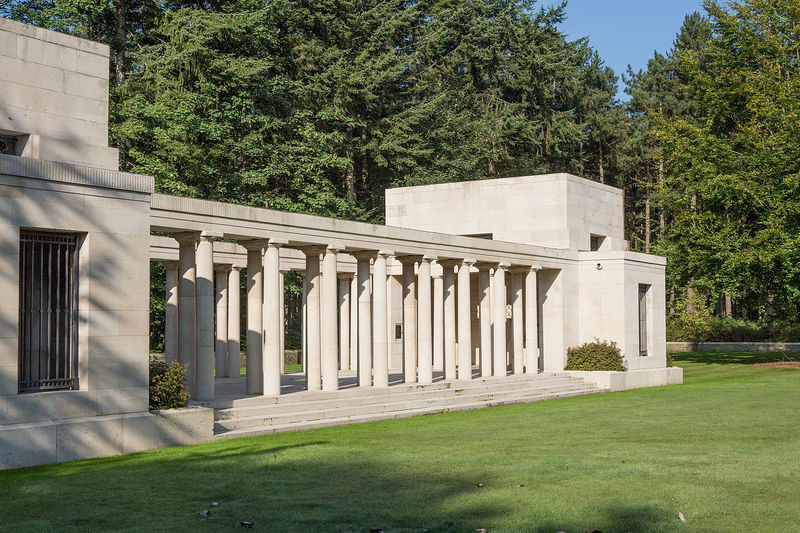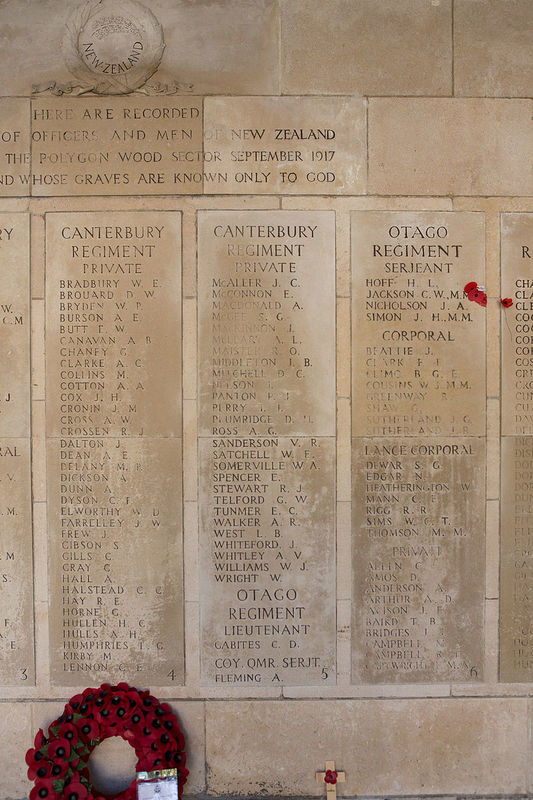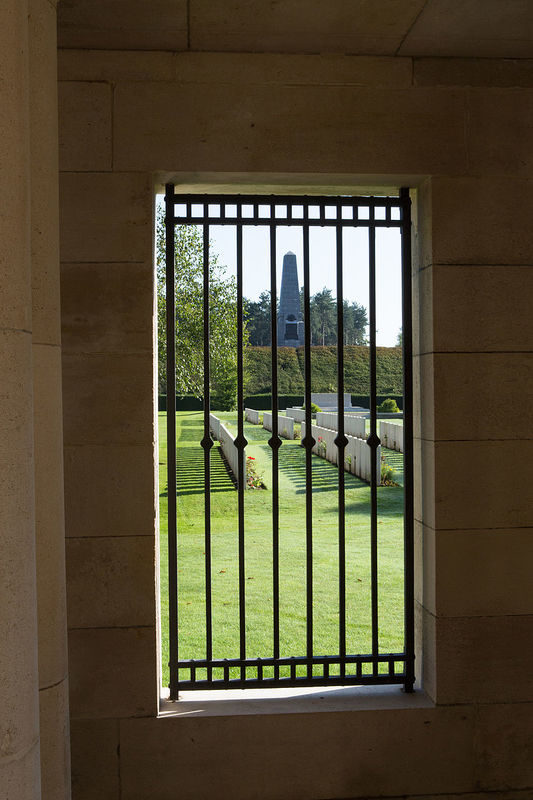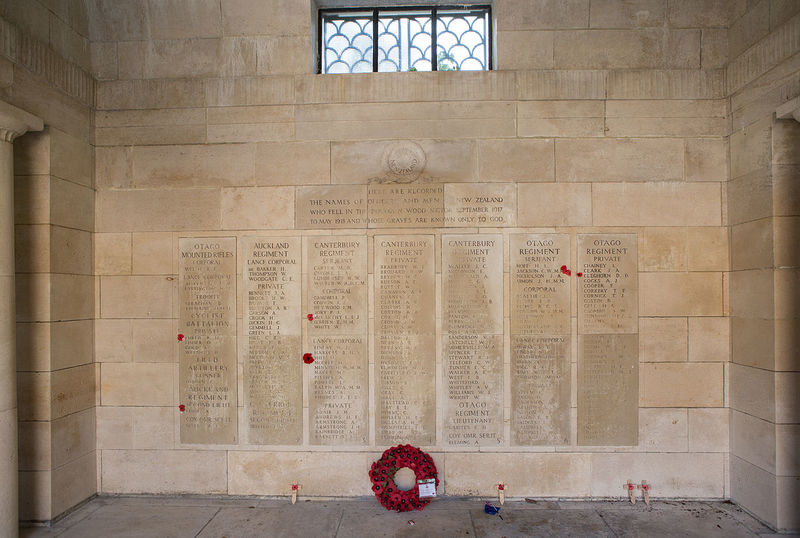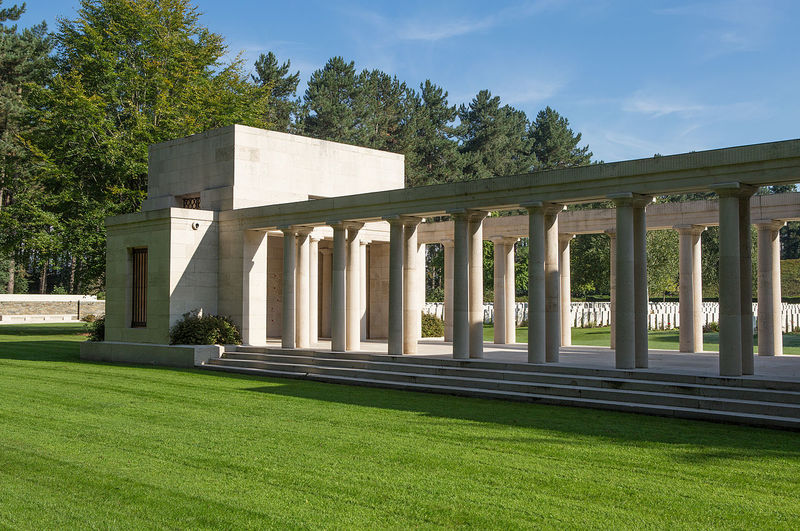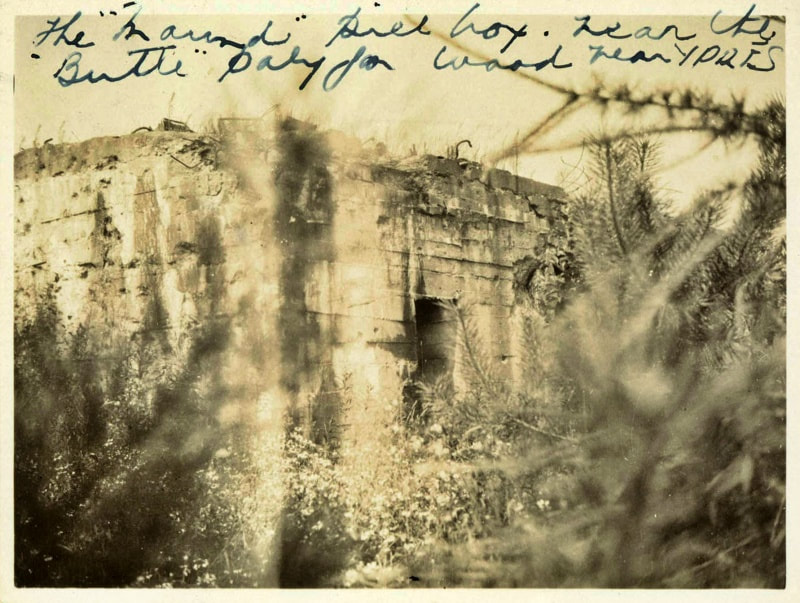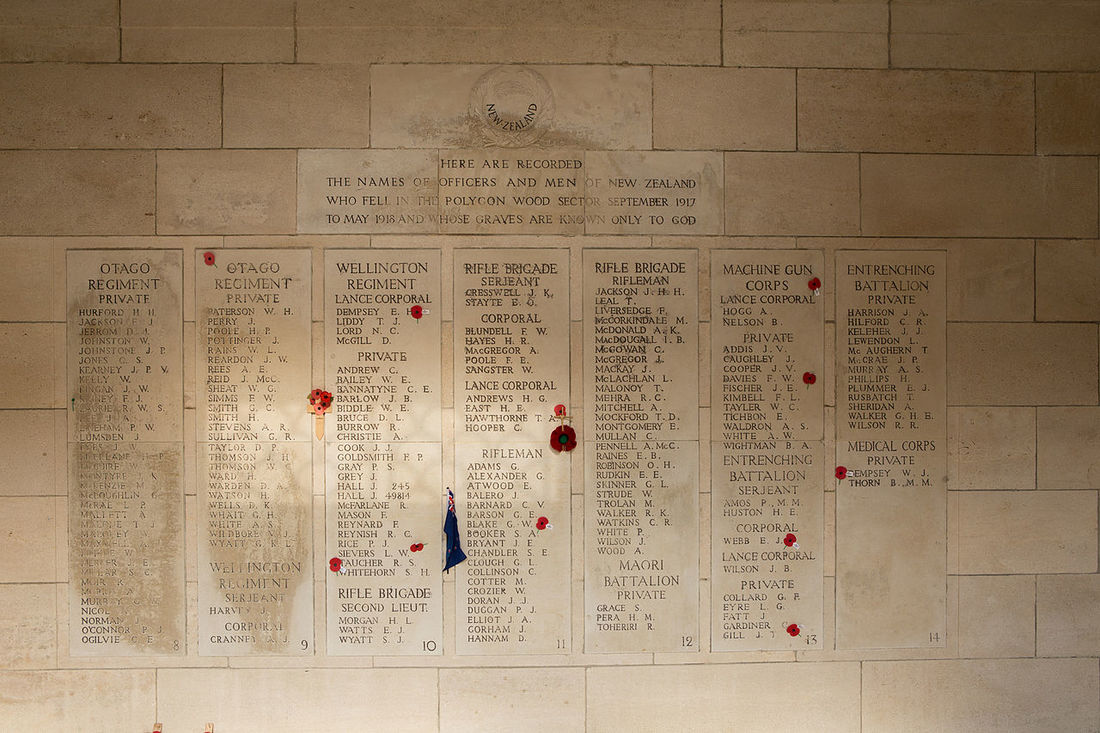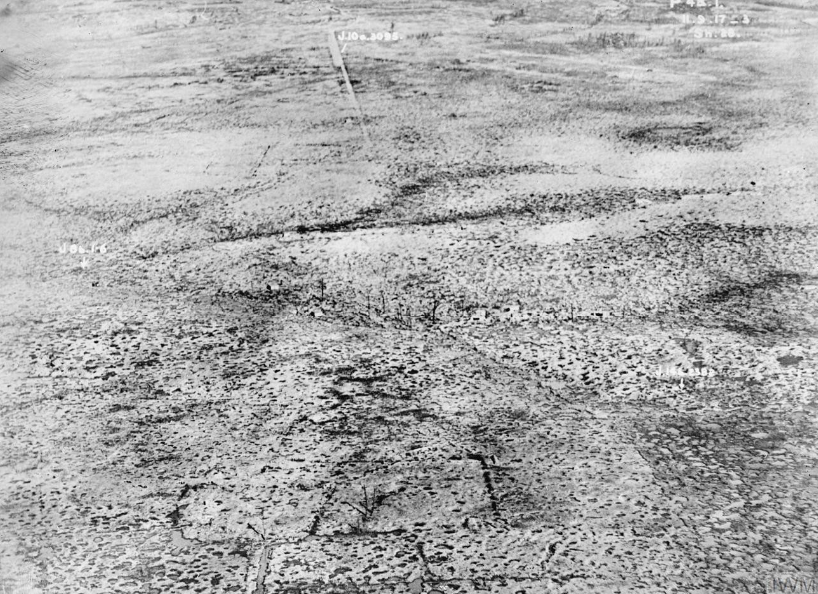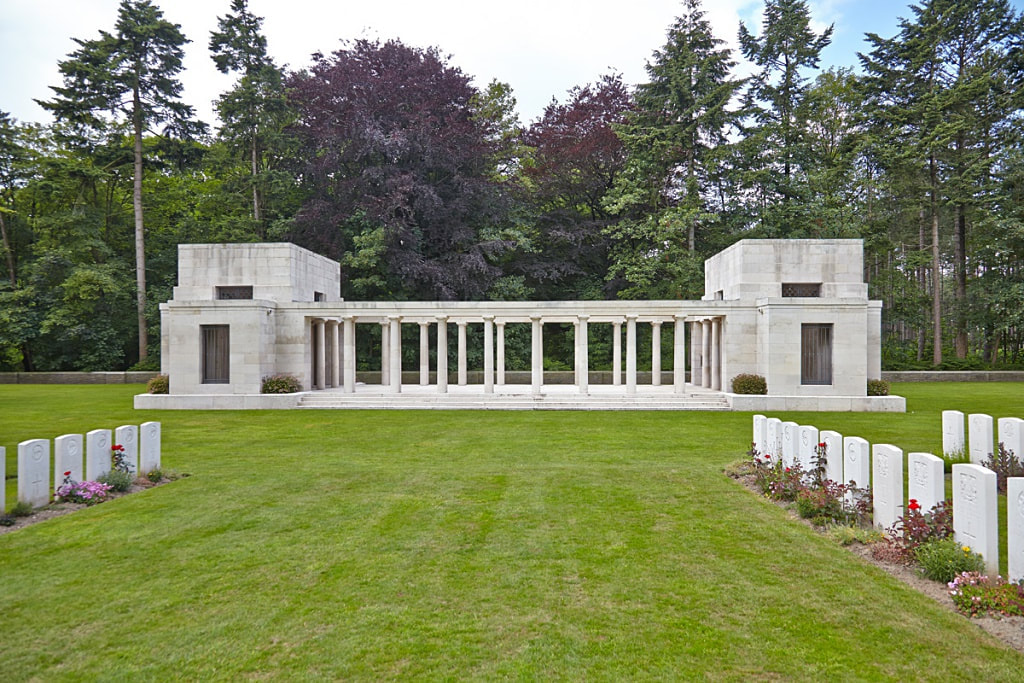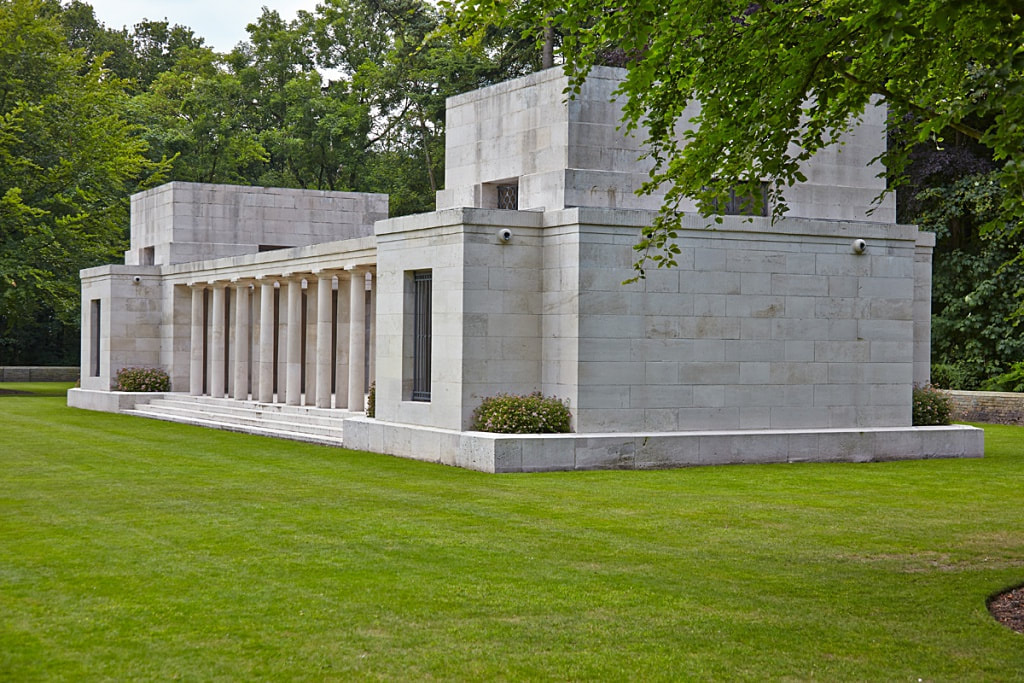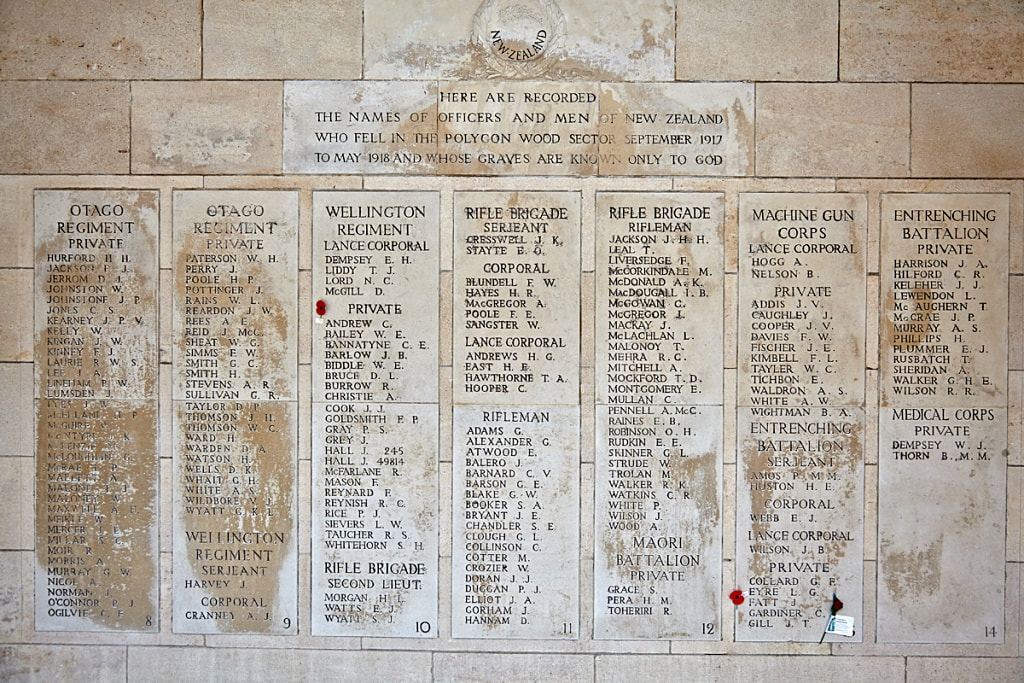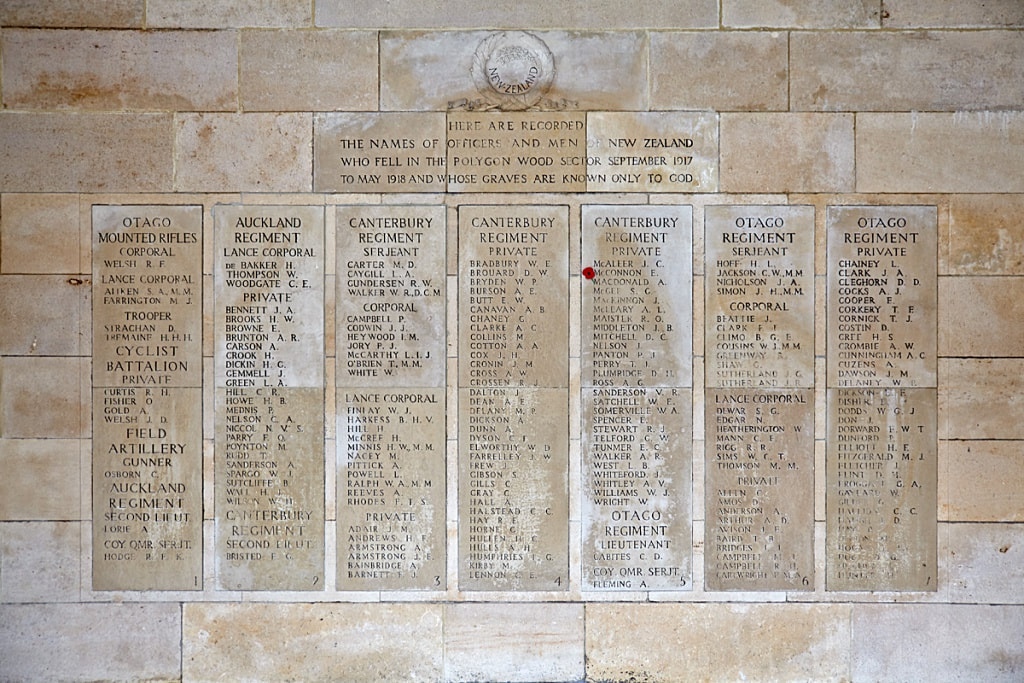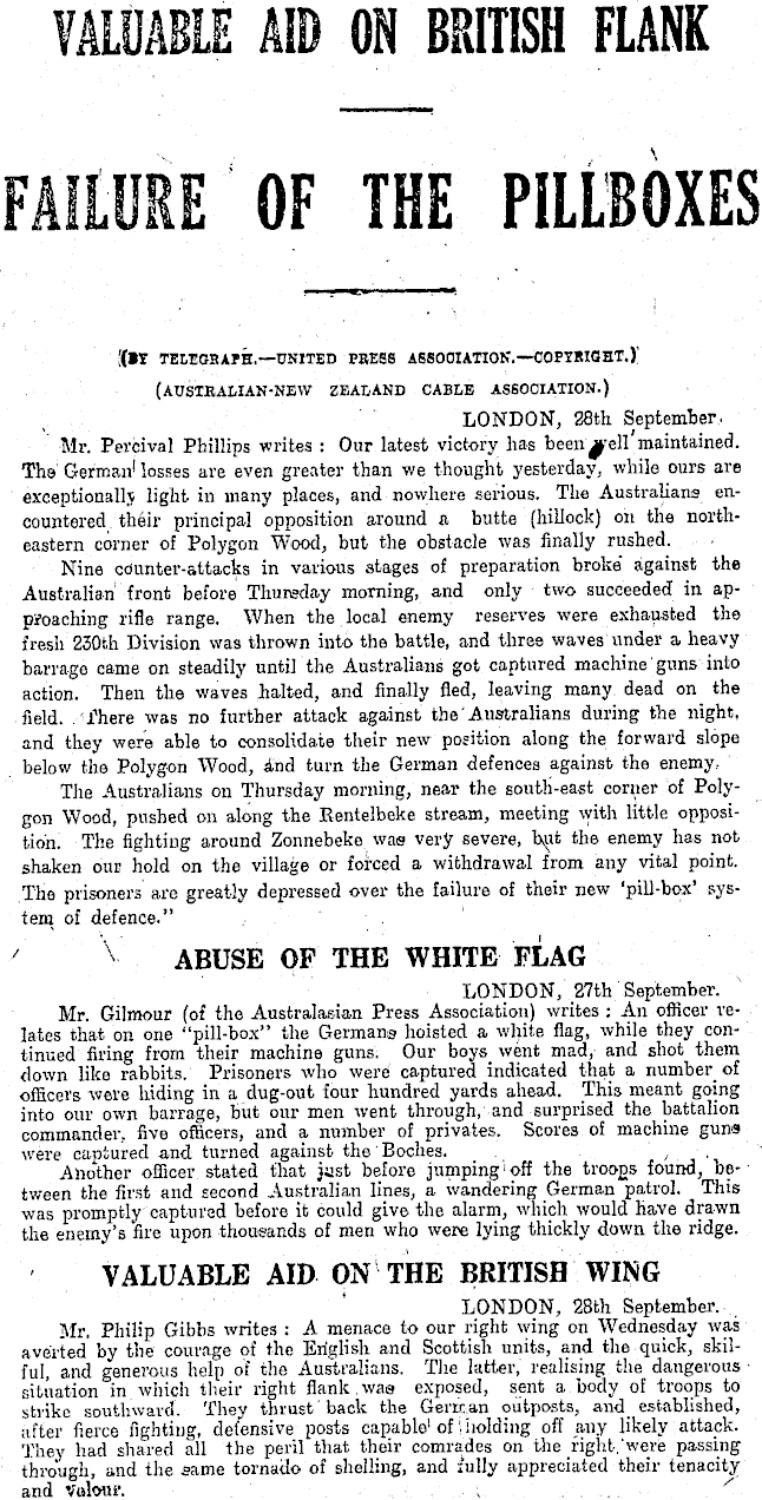BUTTES NEW BRITISH CEMETERY - NEW ZEALAND MEMORIAL
Polygon Wood
West-Vlaanderen
Belgium
GPS Coordinates Latitude: 50.85694 Longitude: 2.99084
Location Information
The New Zealand Memorial to the Missing is located within Buttes New British Cemetery, which is 8 Kms east of Ieper town centre, on the Lange Dreve, a road leading from the Meenseweg (N8) connecting Ieper to Menen.
From Ieper town centre the Meenseweg is located via Torhoutstraat and right onto Basculestraat. Basculestraat ends at a main crossroads directly over which begins the Meenseweg. 4.5 Kms along the Meenseweg lies the left hand turning onto Oude Kortrijkstraat. 2 Kms along the Oude Kortrijkstraat the road crosses the A19 motorway. Immediately after this bridge is the left hand turning onto the Lotegatstraat, which borders Polygon Wood. 800 metres along the Lotegatstraat is the right hand turning onto Lange Dreve. The Cemetery is located 1 Km along the Lange Dreve on the right hand side of the road.
Visiting Information
Wheelchair access to the cemetery where this memorial stands is possible via the main entrance.
Historical Information
Polygon Wood (the "Polygone de Zonnebeke", or Polygoneveld)is a large wood south of the village of Zonnebeke which was completely devastated in the First World War. The wood was cleared by Commonwealth troops at the end of October 1914, given up on 3 May 1915, taken again at the end of September 1917 by Australian troops, evacuated in the Battles of the Lys, and finally retaken by the 9th (Scottish) Division on 28 September 1918. On the Butte itself is the Battle Memorial of the 5th Australian Division, who captured it on 26 September 1917.
POLYGON WOOD CEMETERY is an irregular front-line cemetery made between August 1917 and April 1918, and used again in September 1918.
Identified Caualties: New Zealand 58, United Kingdom 30, Germany 1. Total 89.
Unidentified Casualties: 18. Total 18.
A walled avenue leads from Polygon Wood Cemetery, past the Cross of Sacrifice, to the BUTTES NEW BRITISH CEMETERY. This burial ground was made after the Armistice when a large number of graves (almost all of 1917, but in a few instances of 1914, 1916 and 1918) were brought in from the battlefields of Zonnebeke.
Total Burials: 2,112.
Identified Burials: United Kingdom 172, Australia 160, New Zealand 95, Canada 6. Total 433.
Unidentified Burials: 1,679.
The BUTTES NEW BRITISH CEMETERY (NEW ZEALAND) MEMORIAL, which stands in Buttes New British Cemetery, commemorates 378 officers and men of the New Zealand Division who died in the Polygon Wood sector between September 1917 and May 1918, and who have no known grave. The majority died in the trenches, or in working and carrying, and the conditions in the Salient during the winter of 1917-18 must explain the comparatively large number of names on this memorial, which deals with only one set attack on a German position.
This is one of seven memorials in France and Belgium to those New Zealand soldiers who died on the Western Front and whose graves are not known. The memorials are all in cemeteries chosen as appropriate to the fighting in which the men died.
Commemorated: New Zealand 378. Total 378.
The cemeteries and memorial were designed by Charles Holden and Captain Wilfred Clement Von Berg, M. C.
The New Zealand Memorial to the Missing is located within Buttes New British Cemetery, which is 8 Kms east of Ieper town centre, on the Lange Dreve, a road leading from the Meenseweg (N8) connecting Ieper to Menen.
From Ieper town centre the Meenseweg is located via Torhoutstraat and right onto Basculestraat. Basculestraat ends at a main crossroads directly over which begins the Meenseweg. 4.5 Kms along the Meenseweg lies the left hand turning onto Oude Kortrijkstraat. 2 Kms along the Oude Kortrijkstraat the road crosses the A19 motorway. Immediately after this bridge is the left hand turning onto the Lotegatstraat, which borders Polygon Wood. 800 metres along the Lotegatstraat is the right hand turning onto Lange Dreve. The Cemetery is located 1 Km along the Lange Dreve on the right hand side of the road.
Visiting Information
Wheelchair access to the cemetery where this memorial stands is possible via the main entrance.
Historical Information
Polygon Wood (the "Polygone de Zonnebeke", or Polygoneveld)is a large wood south of the village of Zonnebeke which was completely devastated in the First World War. The wood was cleared by Commonwealth troops at the end of October 1914, given up on 3 May 1915, taken again at the end of September 1917 by Australian troops, evacuated in the Battles of the Lys, and finally retaken by the 9th (Scottish) Division on 28 September 1918. On the Butte itself is the Battle Memorial of the 5th Australian Division, who captured it on 26 September 1917.
POLYGON WOOD CEMETERY is an irregular front-line cemetery made between August 1917 and April 1918, and used again in September 1918.
Identified Caualties: New Zealand 58, United Kingdom 30, Germany 1. Total 89.
Unidentified Casualties: 18. Total 18.
A walled avenue leads from Polygon Wood Cemetery, past the Cross of Sacrifice, to the BUTTES NEW BRITISH CEMETERY. This burial ground was made after the Armistice when a large number of graves (almost all of 1917, but in a few instances of 1914, 1916 and 1918) were brought in from the battlefields of Zonnebeke.
Total Burials: 2,112.
Identified Burials: United Kingdom 172, Australia 160, New Zealand 95, Canada 6. Total 433.
Unidentified Burials: 1,679.
The BUTTES NEW BRITISH CEMETERY (NEW ZEALAND) MEMORIAL, which stands in Buttes New British Cemetery, commemorates 378 officers and men of the New Zealand Division who died in the Polygon Wood sector between September 1917 and May 1918, and who have no known grave. The majority died in the trenches, or in working and carrying, and the conditions in the Salient during the winter of 1917-18 must explain the comparatively large number of names on this memorial, which deals with only one set attack on a German position.
This is one of seven memorials in France and Belgium to those New Zealand soldiers who died on the Western Front and whose graves are not known. The memorials are all in cemeteries chosen as appropriate to the fighting in which the men died.
Commemorated: New Zealand 378. Total 378.
The cemeteries and memorial were designed by Charles Holden and Captain Wilfred Clement Von Berg, M. C.
Images in this gallery © Werner Van Caneghem

(1919) View of the area around Polygon Butte (far right) taken from Polygon Wood near Zonnebeke. On the far left are rows of stacked shells as well as duckboards, which extend across the centre. In the foreground are the remains of a sandbagged trench, in front of which are several graves marked by crosses. This panorama is one of a series taken by the Australian War Records Section with a 'Cirkut' camera.
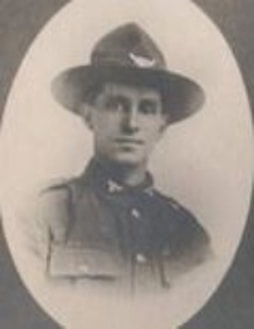
9/108 Lance Corporal
Stewart Alex Aitken, M. M.
Otago Mounted Rifles, N.Z.E.F.
29th April 1918, aged 27.
Son of James A. and Ellen S. Aitken, of Waikaka Valley, Southland, New Zealand. Also served at Gallipoli.
Stewart Alex Aitken, M. M.
Otago Mounted Rifles, N.Z.E.F.
29th April 1918, aged 27.
Son of James A. and Ellen S. Aitken, of Waikaka Valley, Southland, New Zealand. Also served at Gallipoli.
Images in this gallery © Geerhard Joos
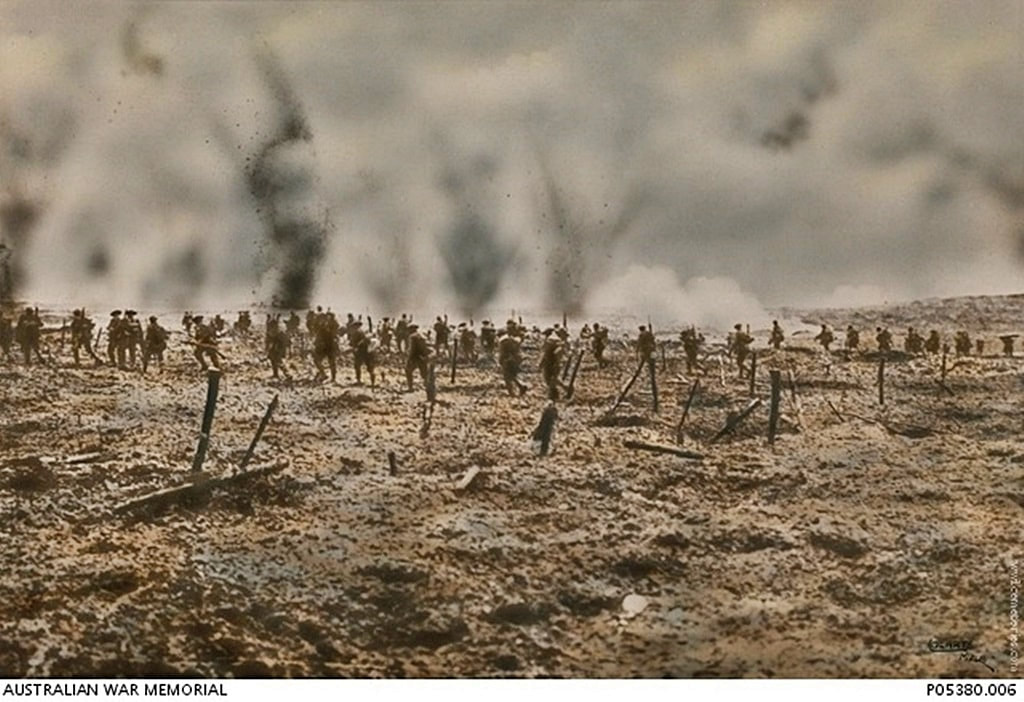
c 1921. "Following the barrage, 20th September, 1917". A hand-coloured print of a photograph taken by an unknown Australian soldier showing the attack on Polygon Wood by the Australian troops that followed a great barrage on the morning of 20 September 1917. This hand-coloured print was produced by Colarts Studio, also known as the Colograph-Art Company. Colarts was the contractor to the Australian War Memorial for producing photographic prints for sale to the public. The studio produced enlargements, intended for framing, and toned and hand-coloured prints. Joynt also collected soldier photographs, from which he produced, exhibited, and sold similar coloured enlargements. Colarts was owned by Capt. William D. Joynt, V.C. Colarts Studio operated at 98 Albert St, Windsor, Melbourne, then 447-9 Law Courts Place, Melbourne. The entry for this print in Colarts' catalogue of soldier photographs carried the following caption: "The Passchendaele operations saw the greatest concentration of artillery in the war - one gun to every nine years of front - throwing projectiles weighing from 18 lbs. to nearly a ton, to a depth of 1000 yards. Advancing in lifts of 100 yards every three minutes, our men literally walked behind a wall of fire". This print was made in Colarts' Windsor studio. Joynt's collection of soldier photographs was later acquired by the AWM.
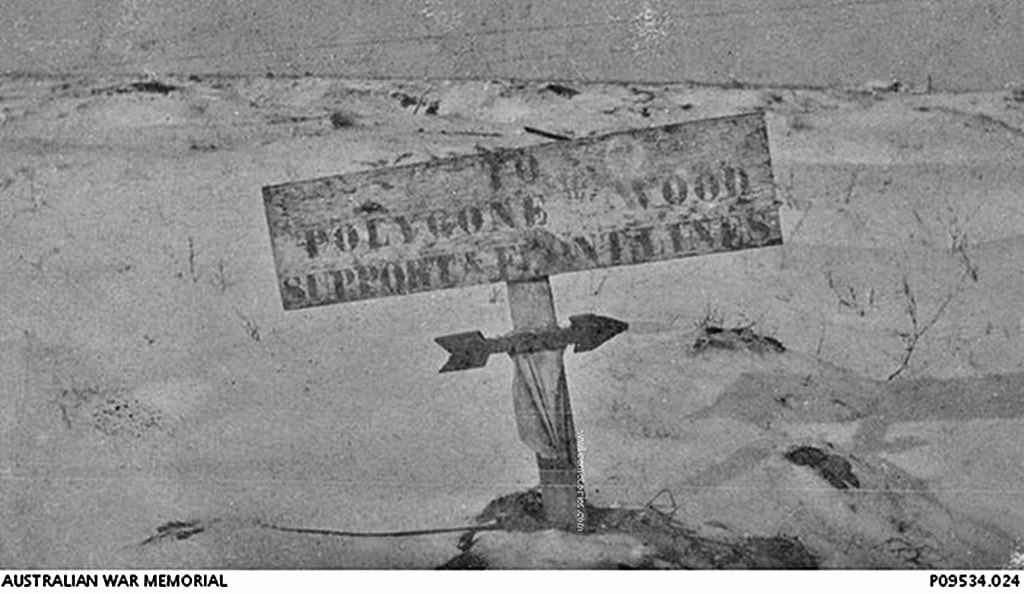
This photo was inscribed with "Phil Hall was buried somewhere near here." 'This was a cousin of Lt Harvey.' The sign in the snow reads 'TO POLYGONE [sic] WOOD. SUPPPORT & FRONT LINES.' Phil Hall is probably 3796 Private (Pte) William Philip Hall, 29th Battalion, of Geelong, Vic. He was killed in action on 26 September 1917 and buried in Polygon Wood Race Course. He was later re-buried in Duhallow A D S Cemetery, Belgium. (One of a collection of photographs belonging to Lieutenant (Lt) Robert Trevor Williams and taken by Lt William Wyatt Harvey during a battlefield tour of France and Belgium, January 1919, by officers of the 3rd Pioneer Battalion. The original caption quoted in double inverted commas is by Lt Harvey. The original caption quoted in single inverted commas is by Lt Williams.)
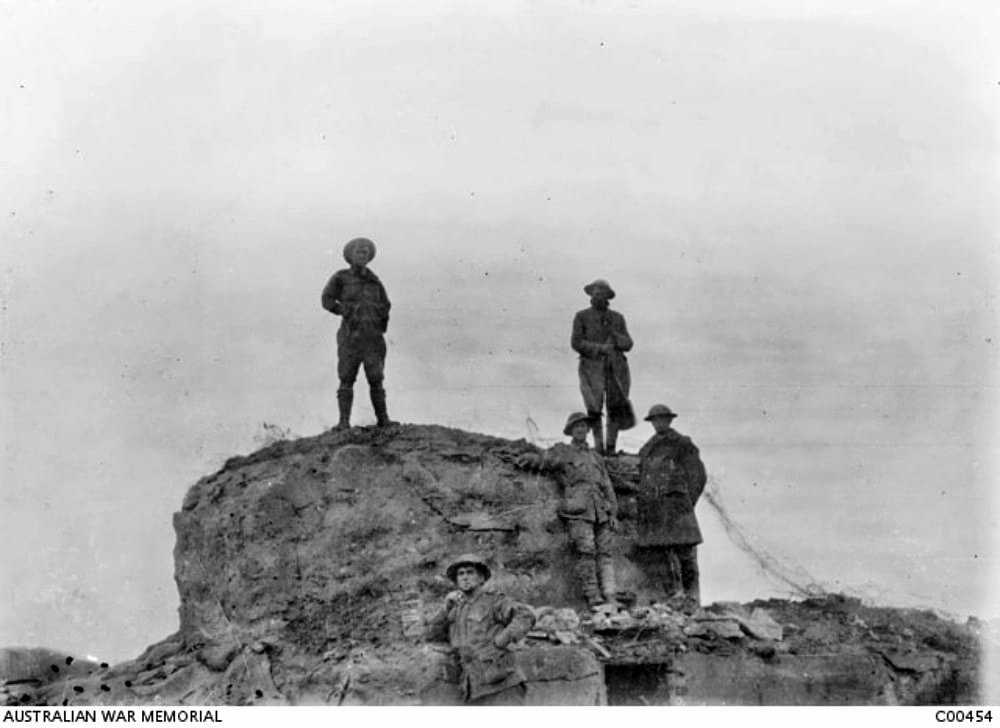
November 1917: Five unidentified soldiers standing on the pillbox (fortified observation post) known as 'Anzac House' on Anzac Ridge, near Polygon Wood in the Flemish countryside east of Ypres. The main line of German resistance lay along an old system of trenches that followed this ridge, which was attacked by the Australians during the battle of Menin Road in September 1917.


